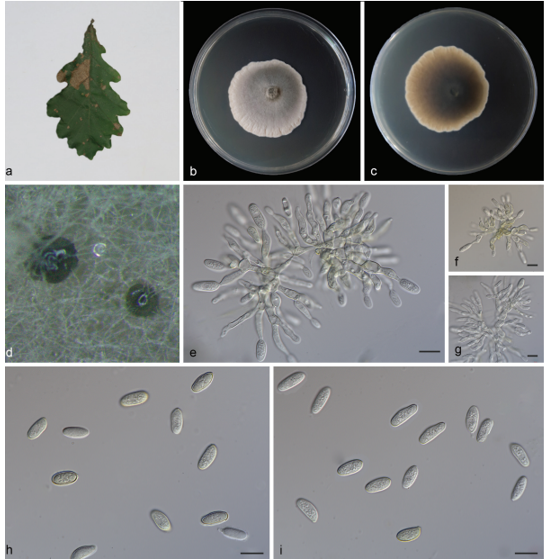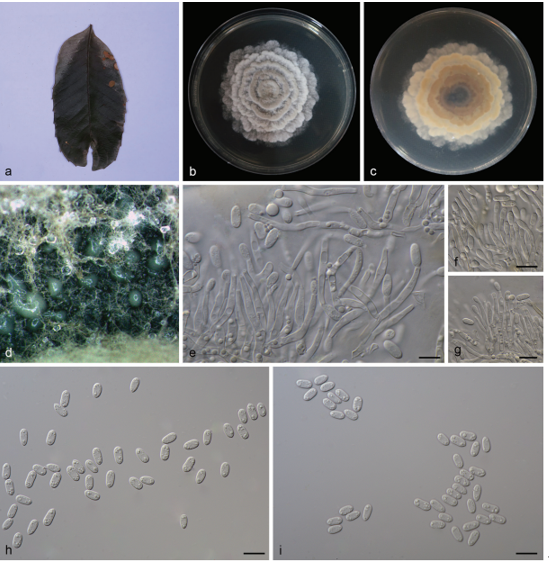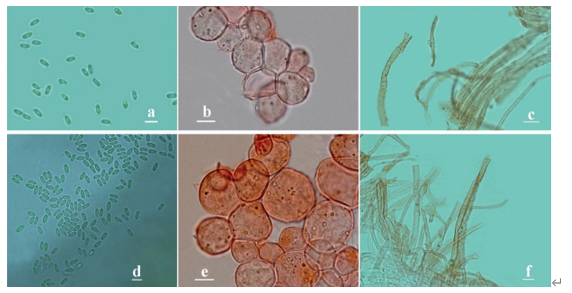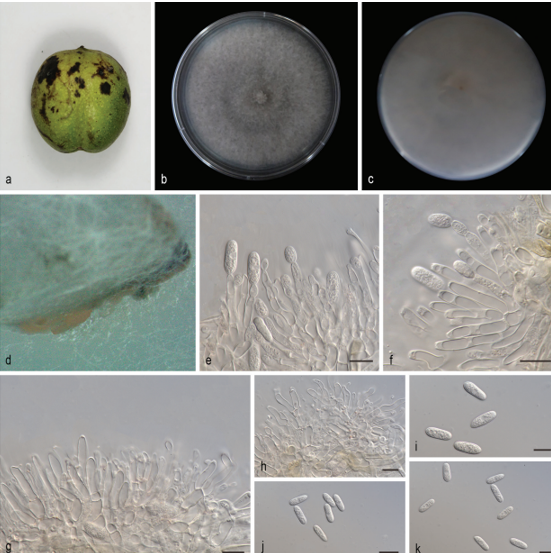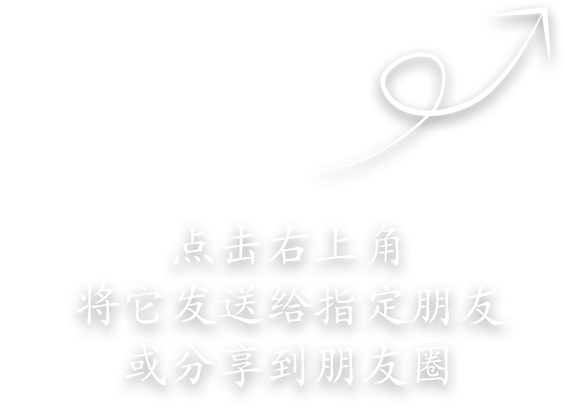Tremella australe F. Wu, L.F. Fan & Y.C. Dai, sp. nov.2021
MycoBank: 839825
Holotype:China Yunnan, Ruili, on fallen angiosperm branch, 23 April 2018, F. Wu 154 (BJFC028064).
Description
Sexual morph:Basidioma. Sessile, when fresh soft gelatinous, creamy-white to beige, translucent, cerebriform, with thick and undulate lobes, up to 4.0 cm long, 2.0 cm broad and 2.0 cm high from base, distinctly shrinking into a film and becoming pale yellow when dry, broadly attached to substratum. Hyphae hyaline, smooth, thin- to slightly thick-walled, 1.5 6.0 µm in diameter, branched, interwoven, with abundant clamp connections, clamp complexes and anastomoses, slightly thick-walled hyphae usually present near to base of basidioma and sometimes swollen up to 8.5 µm; hyphidia hyaline, smooth, thin-walled, usually derived from the same hyphae with basidia; swollen cells, vesicles and haustoria absent; mature basidia thin-walled, globose to subglobose, with a basal clamp connection, 14.0–19.0 × 13.0–17.0(–18.0) µm, L = 16.3 µm, W = 15.8 µm, Q = 1.03 (n = 30/1), sometimes their width greater than length, usually longitudinally septate, 2–4-celled, with obvious oil drops; sterigmata up to 20 µm long, 1.0–2.5 in diameter, slightly protuberant at apex; probasidia thin-walled, globose to subglobose, mostly proliferating directly from basidial clamps; basidiospores hyaline, thin-walled, broadly ellipsoid to ellipsoid, apicu late, with oil drops, 8.0–10.0 × 6.0–8.0 µm, L = 8.6 µm, W = 7.3 µm, Q = 1.18–1.28 (n = 60/2), germinating by germ tubes or secondary spores; conidia absent.
Asexual morph: Undetermined
Culture: Undetermined
Habitat: Undetermined:
Distribution:China
GenBank accessions: ITS MT445847,TEF1 MT445759;
ITS MT445848,PartialnLSU MT425188 ,mtSSU MT483749,TEF1 MT445760,RPB2MT445753;
Notes:Tremella australe formed an independent lineage with high support in our phylogenies (Figs 1, 2). The species is easily confused with T. guangxiensis by sharing whitish, translucent cerebriform basidioma and similar basidia and basidiospores, but T. guangxiensis has branched hyphidia and umbelliform conidiophores. Besides, T. aus trale are different from T. subfibulifera, T. guangxiensis and T. “neofibulifera” by 7.82%, 5.94% and 6.82% sequence differences in the ITS sequences and 2.13%, 3.43% and 1.25% in the partial nLSU sequences respectively
Referenc: [1] Zamora, J. C. , Millanes, A. M. , Wedin, M. , Rico, V. J. , & Perez-Ortega, S. . (2016). Understanding lichenicolous heterobasidiomycetes: new taxa and reproductive innovations in tremella s.l. Mycologia, 108(2), 381-396.
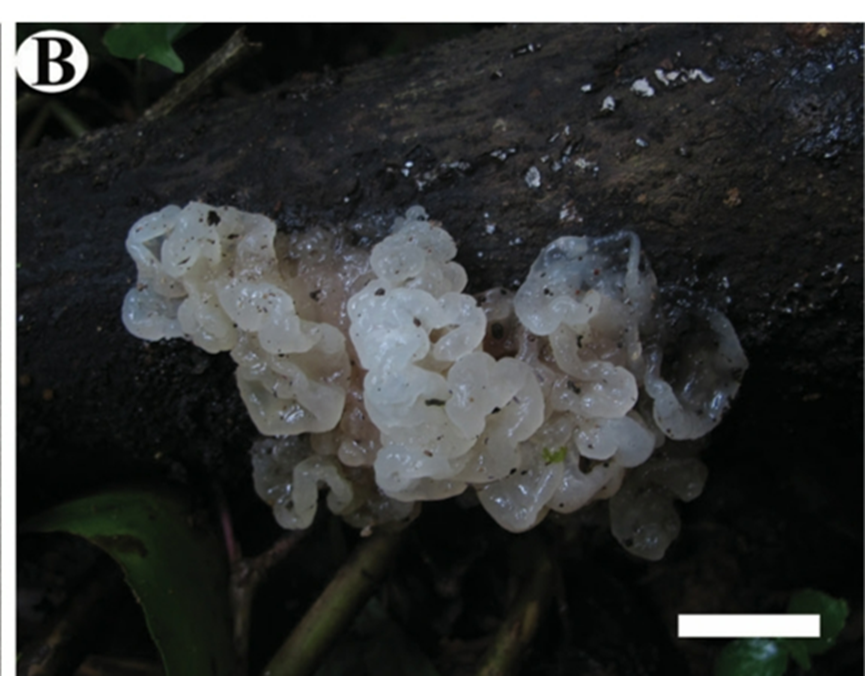
B T. australe (Wu 154
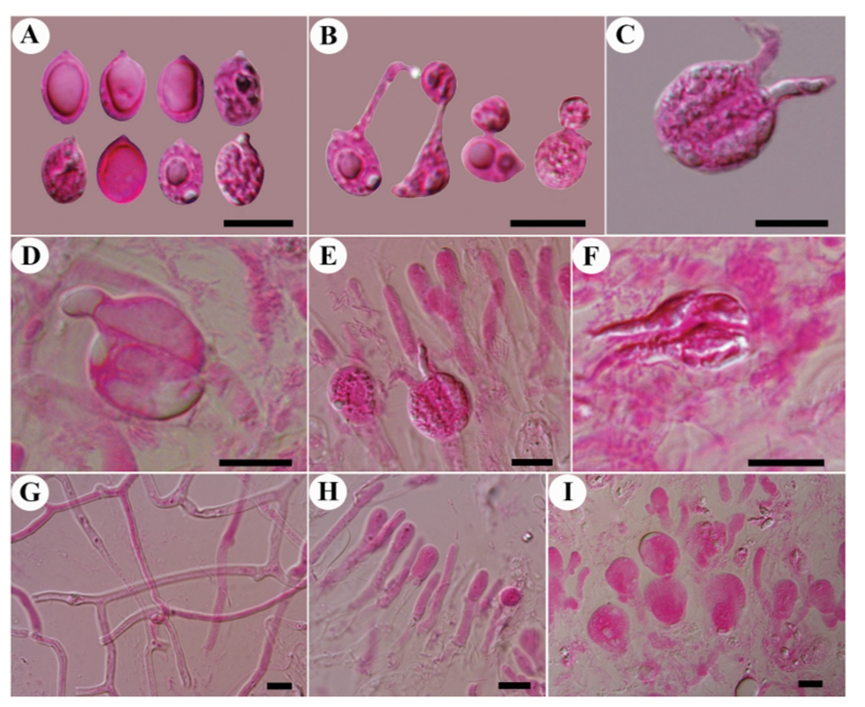
A basidiospores B germination tubes of basidiospores and secondary spores C–F basidia at different stages G hyphae with clamp connections and clamp complexes H hyphidia I a section of hymenium. Scale bars: 10 µm (A–I).


